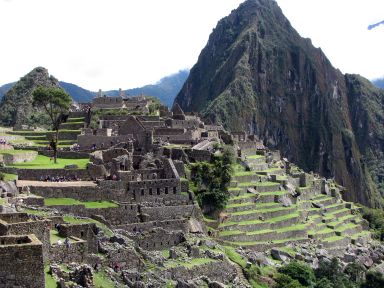
2011-04-23: Machu Picchu
The Incas started building the "estate" around AD 1400 but abandoned it as an official site for the Inca rulers a century later.
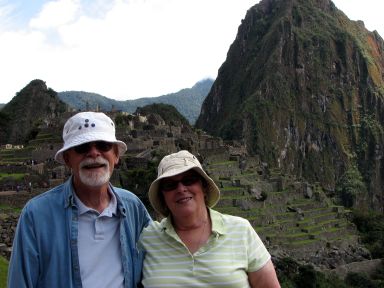
2011-04-23: WOW
It was a huge WOW the first time we rounded the corner and saw how huge this site is. It's difficult to believe that we were walking the land that the Incas walked so many years ago.
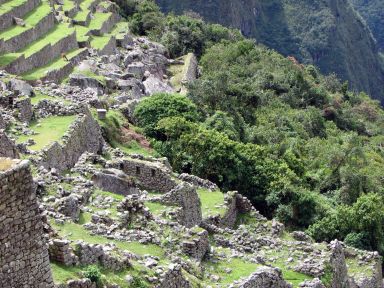
2011-04-23: The Ruins
Although known locally, Machu Picchu was unknown to the outside world before being brought to international attention in 1911 by the American historian Hiram Bingham. Since then, Machu Picchu has become an important tourist attraction.
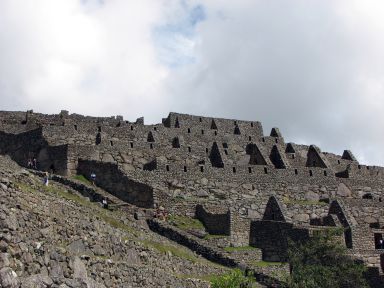
2011-04-23: Residences
It is believed that the emperor used this site as a winter retreat from Cuzco which is colder and higher in elevation. When he was in residence, it is thought the population was around 1,000.
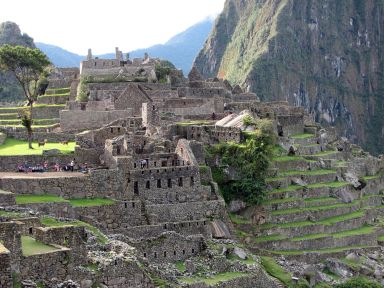
2011-04-23: Farmers
When the emperor was not in residence, the population decreased to about 500. Those who stayed year round are thought to have been the farmers who maintained the planted terraces as well as the site.
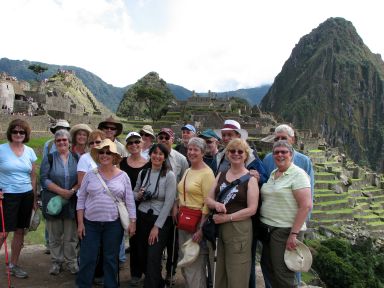
2011-04-23: Group
Our group of 18 paused long enough to have a photo before continuing exploration of Machu Picchu.
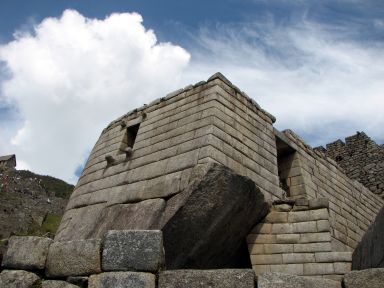
2011-04-23: Temple of the Sun
Machu Picchu was built in the classical Inca style, with polished dry stone walls. Its three primary buildings are the Intihuatana, the Temple of the Sun, and the Room of the Three Windows. These are located in what is known by archaeologists as the Sacred District of Machu Picchu.

2011-04-24: Llamas
Llamas graze freely on the grounds keeping the grass cut short. This cute little one was born only hours before we arrived and was not yet steady on his legs.
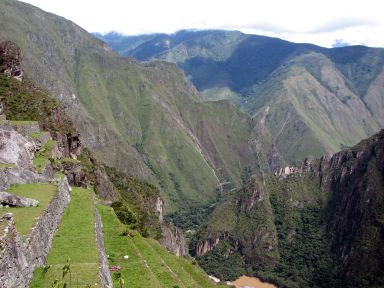
2011-04-24: Back
The backside of the mountain is quite steep but still has terraces where crops were planted and grown. The Incas certainly used the land to their advantage.
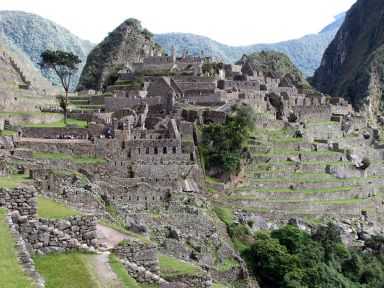
2011-04-24: UNESCO World Heritage Site
Although Machu Picchu is only about 50 miles from Cuzco, the Spanish never found it and as a result it was not plundered or destroyed by man. Over the centuries, the surrounding jungle grew over much of the site and few outsiders knew of its existence. On July 24, 1911, Hiram Bingham, a lecturer at Yale, discovered the site while searching for the city of Vilcambamba. A local Quechuas boy, Pablito Alvarez, actually led him to the site where some of the Quechuas were living in the original structures. In 1983 Machu Picchu was designated as a World Heritage Site by UNESCO.

2011-04-24: Agua Caliente
This small village is the terminus for the train to Machu Picchu and where one boards the bus for the 3.7-mile ride up the mountain with hairpin turn after hairpin turn. It is also the locale of a colorful market.
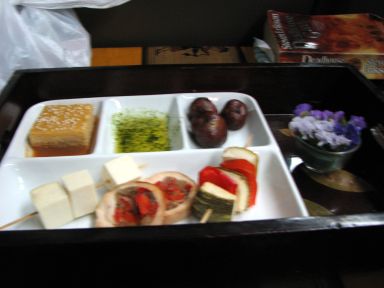
2011-04-24: Andean Trilogy
Our snack on the train included grilled chicken roulette with homemade chimichurri filled with sautéed vegetables served with sautéed native potatoes, grilled vegetable mini brochette and an Andean cheese mini brochette.
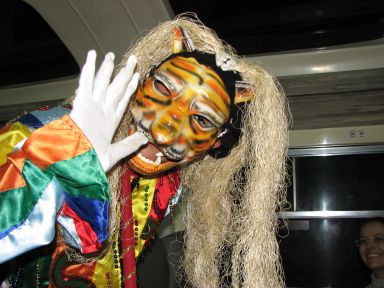
2011-04-24: Entertainment
Dancing up and down the train aisle wearing what appeared to be traditional Peruvian festival clothing, this character randomly scared some and bewildered most passengers. I don't know if his antics were part of a cultural tradition or just a modern attempt at entertainment.